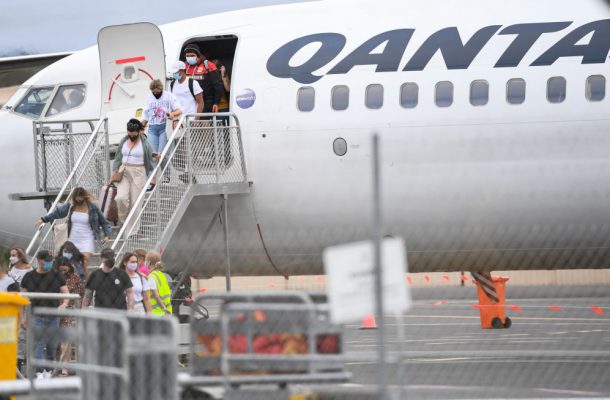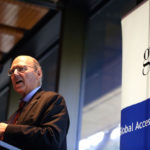The return of hard borders

In 2000, it appeared that international borders were becoming less and less important. Between then and 2020, most Australians seemed comfortably unaware that international travel was only more accessible for those with the ‘right’ passports. We saw ourselves increasingly as international citizens in a globalised world where sovereignty and borders were less relevant.
Few realise that since the modern passport was invented in 1920, cross-border movement has become steadily harder for those outside Western liberal democracies.
The idea of a globally recognised passport is a relatively new construct created at the end of World War I. In 1920, the League of Nations held the Paris Conference on Passports, Customs Formalities and Through Tickets, which resulted in the development of passport guidelines. Given the increased people movement at the time, many of the countries central to the drafting of the agreement weren’t focused on opening the globe to even greater travel. For them, it was a policy move to control post-war people movement. Of course, if you had the ‘right’ passport, you enjoyed protections from the start. For the rest, the passport was a burden.
In the intervening years, passport technology advanced significantly. Many nations and industry figures talk of the passport as a key to an enhanced customer experience. And this is true for those fortunate enough to be entitled to passports that bestow extreme privilege—easier access to visas and quicker movement through borders—Australians included.
Those who subscribe to the benefits of globalisation will argue that citizenship’s privileges, in terms of freedom of movement, became less significant with the rise of the global citizen. Such theories are blind to the events that have promoted selective permeability and inequality over the past two decades. For the average Australian travelling internationally, selective permeability was a boon, with cross-border movement increasingly easier. For those from the global south, international travel became slower with more intrusive border security interactions.
Counterterrorism efforts were no doubt a catalyst for the hardening of some borders. In the years that followed the 11 September 2001 terror attacks, many nations operated border regimes that were selectively permeable. At first, this permeability was a tool Western nations used to keep those who might do them harm at a distance. Risk-based profiling prioritised additional security threat assessments for some travelers with passports from known terror hotspots.
By 2014, fighters from all over the globe began travelling to the Middle East to join the Islamic State terror group. In response, several countries, including Australia, sought to cancel the passports of their citizens planning travel to engage in terrorist activities.
It wasn’t just terrorism that promoted selective permeability. In the years preceding the September 11 attacks, the globe was already experiencing increased numbers of people, including refugees, seeking to move irregularly (not through official channels) across international borders in search of safety and economic security. The pressure for movement from source countries across the globe far exceeded the quotas of receiving countries. In the name of protecting sovereignty, passports, or having the ‘right’ passports, became key to controlling international people movement. In most cases, global citizenry brought extreme distress for those who weren’t from the right countries.
The closure of so many international borders and the limitation of international travel brought about by Covid-19 was a global equaliser. Now travel is strictly limited for almost everyone. In Australia’s case, even those with citizenship and a passport have experienced difficulties returning home. That said, it does seem that some with the means, or influence, have been able to find a way. That will hopefully end with the promised reopening of borders later this month.
Over the past two years, policymakers, border officials, and tourism and travel industry representatives have discussed our return to pre-pandemic travel arrangements. These discussions have included consideration of vaccine certificates and passports. Most seem intent on establishing a guide for how we will return to a globalised solution. Unfortunately, it seems, based on the past and the current situation, that this is unlikely. The future of borders, for people movement at least, will be more a matter of selective permeability.
This new environment will not just be about whether a traveler is vaccinated. It will also be about what vaccine they received, when they received a booster and their latest test result. Of course, it would be wonderful if it were a matter of developing a single standard for a vaccination certificate or a means for passports to record an individual’s vaccination status. However, given that passports have always been more concerned with limiting people movement, the most likely scenario is a complex interplay involving vaccine records, passports and testing status.
Australian policymakers have already dabbled with establishing travel bubbles with Singapore and New Zealand. The aim has been to establish routes through countries that have eased border restrictions. To date, these have focused on issues like exemption from travel bans, quarantine-free travel and reduced testing requirements. It appears that, at least for the foreseeable future, these kinds of complex travel routes will become the norm, and a focus on traveler experience the outlier.
For outgoing and returning Australians, it seems that we’re likely to have the right combination of government, passport, vaccine and tests to promote travel. Bilateral or minilateral agreements will likely sit at the heart of future travel. These agreements will promote rapid movement and opportunity for some—and again extreme distress for others, as has happened with passports.
All those in the travel and tourism industry waiting with bated breath for a ‘return to normal’ may be in for a rude shock.
This article was published by The Strategist.
John Coyne is the head of the ASPI border security programme. He spent 20 years as an intelligence professional at tactical, operational, and strategic levels across a range of military, regulatory, national security and law enforcement organisations, primarily in the ASEAN region.










ruthriordan
February 10, 2022 at 5:01 pm
By 2014, fighters from all over the globe began travelling to the Middle East to join the Islamic State terror group.